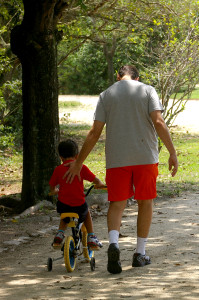For a long time, resource family rates in New Jersey were stagnant and did not correlate with the actual cost of raising a child. But with the help of FAFS and the United States District Court for the District of New Jersey, rates are now linked to the USDA and are updated annually.
 We have a story we like to tell here at Foster and Adoptive Family Services.
We have a story we like to tell here at Foster and Adoptive Family Services.
It involves our co-founder Sue Dondiego. She was standing before the Legislature at the State House in Trenton in the 1970s to fight for increased resource family rates. At the time, the monthly clothing allowance for a child in foster care was about equal to one-third of the price of a new children’s coat.
“It’s cold outside,” Dondiego told the legislators. “What part of the coat would you like me to buy the child this month? The right sleeve? The left sleeve? The buttons?”
Her testimony led to a 26 percent increase in resource family rates that year.
This increase is both important to the history of FAFS and the history of resource family rates. Now, monthly resource family rates begin at $752, a far cry from the 1970s. Parents are also given a daily clothing allowance between $2.25 and $3.11 per day.
Resource family rates vary depending on a myriad of factors, including the child’s age and emotional and physical well-being.
Resource family rates are higher if the foster parent is expected to spend additional time caring for the child as a result of extraordinary emotional or physical needs. Each child in foster care is assessed by a Child Health Unit nurse who assigns an “acuity level.” This level is based upon the heath care needs of a child.
Levels are assigned as follows, according to Child Trends by Child Welfare Policy.org:
• Level 1 – well child
• Level 2 – well child with behavioral health issues (in counseling but not on medication)
• Level 3 – child with a chronic illness that is stable (may be on preventative medication)
• Level 4 – child with an acute and/or chronic illness that is active (including all children on psychotropic medications and children requiring monitoring by a physician every three months and infants under 12 months of age requiring frequent monitoring of growth and development.
• Level 5 – child with an acute and/or chronic condition that is not stable and can leave to a life threatening condition.
Only an acuity level of 5 provides an additional rate change because of the severity of the medical condition.
Resource family rates have grown tremendously over time. From 1984 through 1999, subsidized adoption rates, which often mirror resource family rates, were $431 for children 13 years and older with an acuity level 1. In 2000, that number jumped to $576. Seven years later, in 2007, it increased to $687. Now that rate is $895.
The reason for the rate increases?
The Department of Children and Families (DCF) are required to ensure that resource family rates remain equal to the USDA cost of raising a child in a two parent middle income family in the urban Northeast, according to the United States District Court. The USDA publishes these reports on an annual basis and DCF reviews and adjusts, based on the report.
That’s why resource parents of a 6-year-old girl in 2000 received $495 per month. Now that same parent would receive $834 per month. As the cost of living and the price of raising a child continues to increase, so will the resource family rates. To see the USDA’s Cost of Raising a Child Calculator, click here.
To see a list of resource family rates dating back to 1984, click here.
